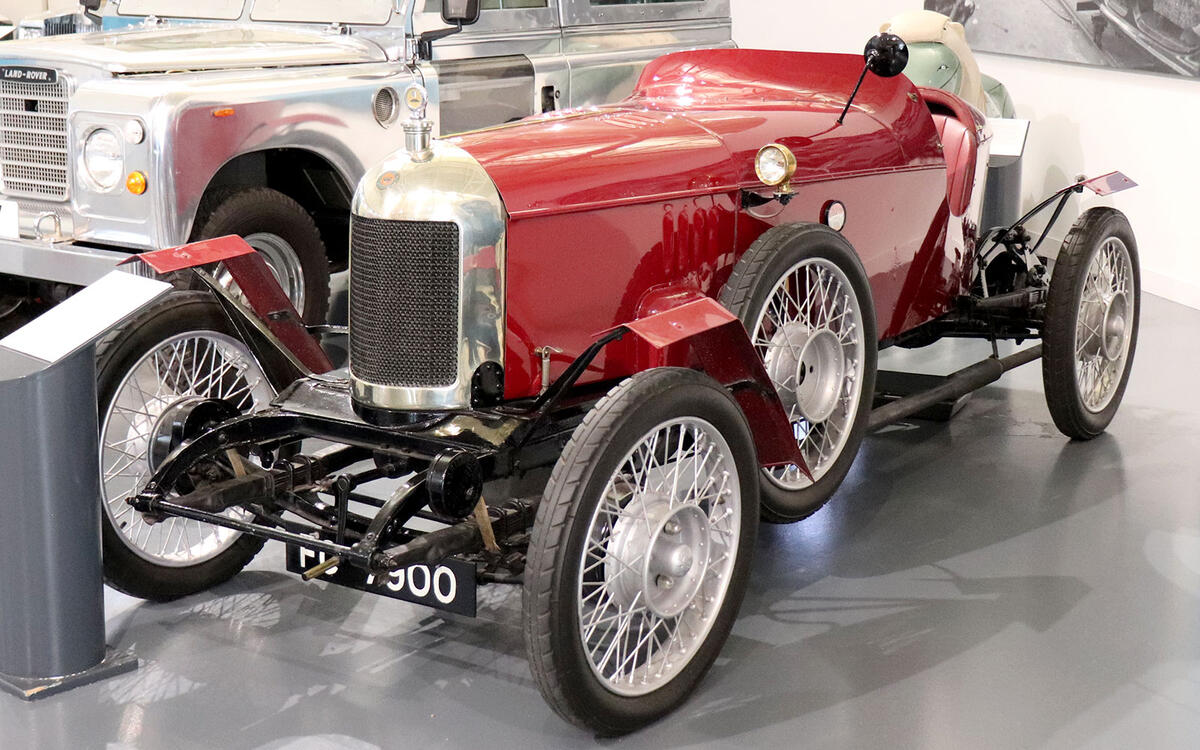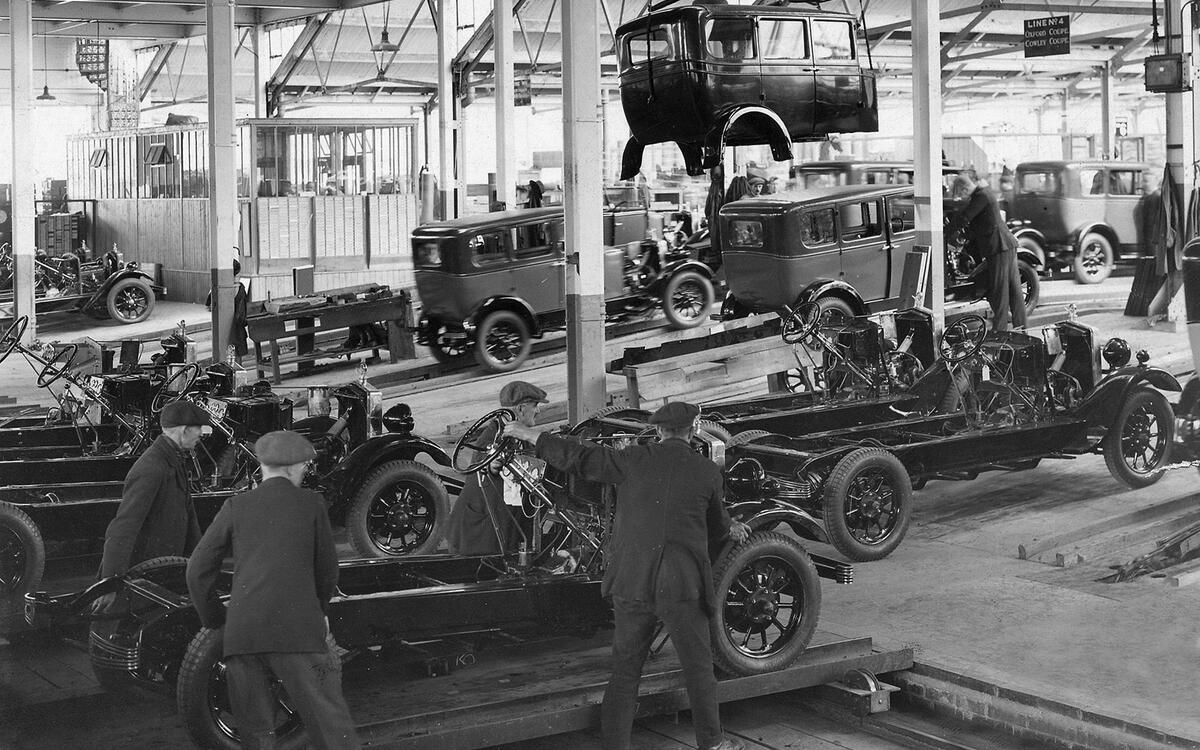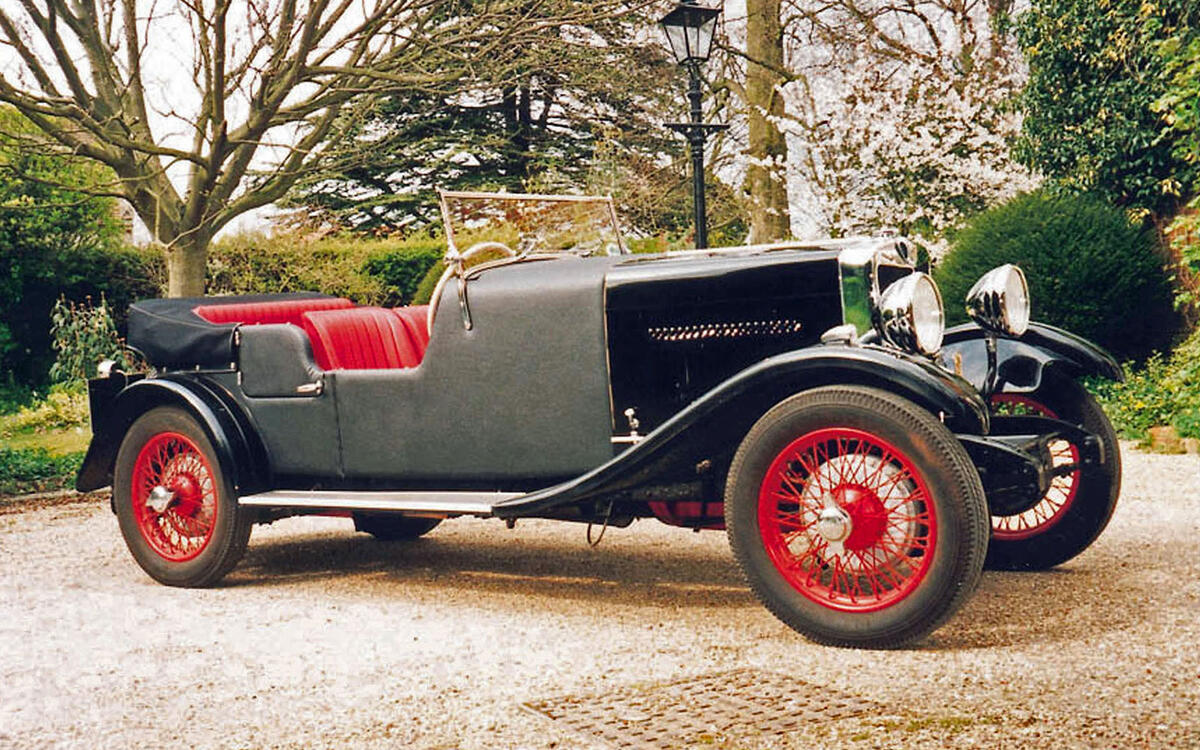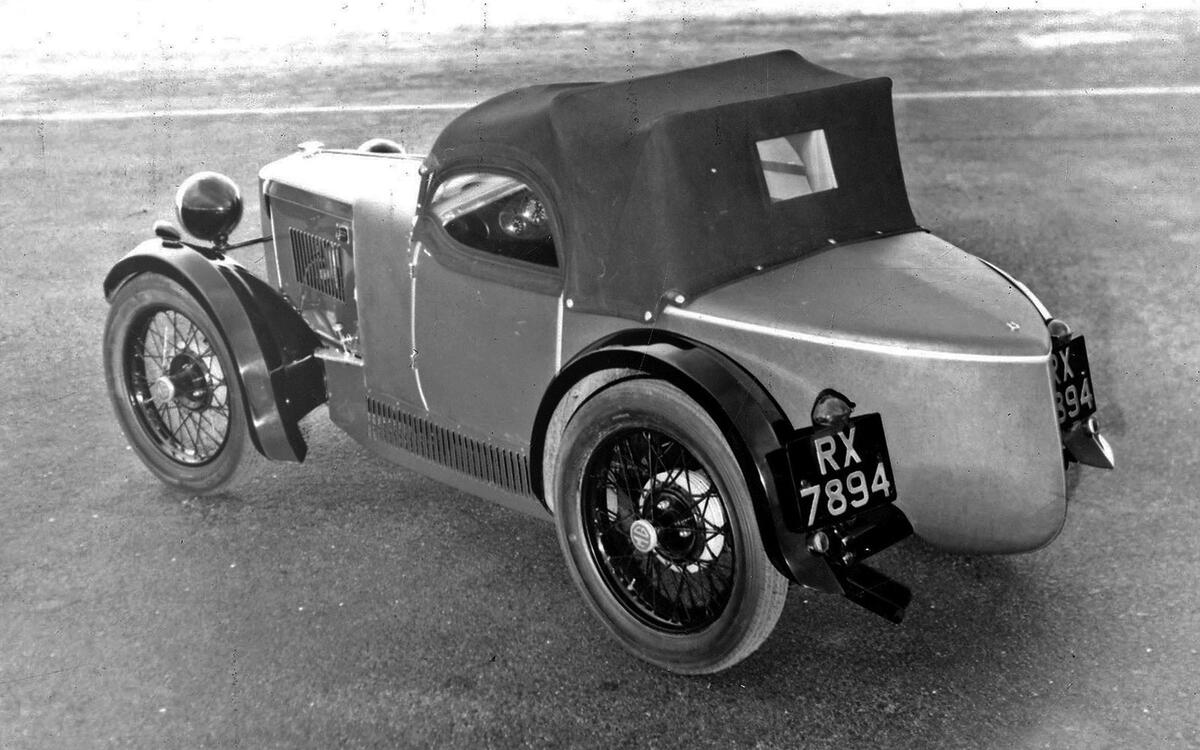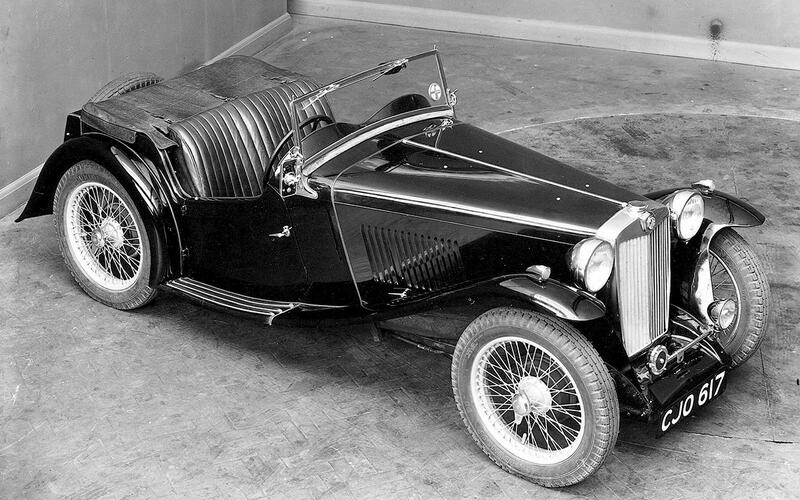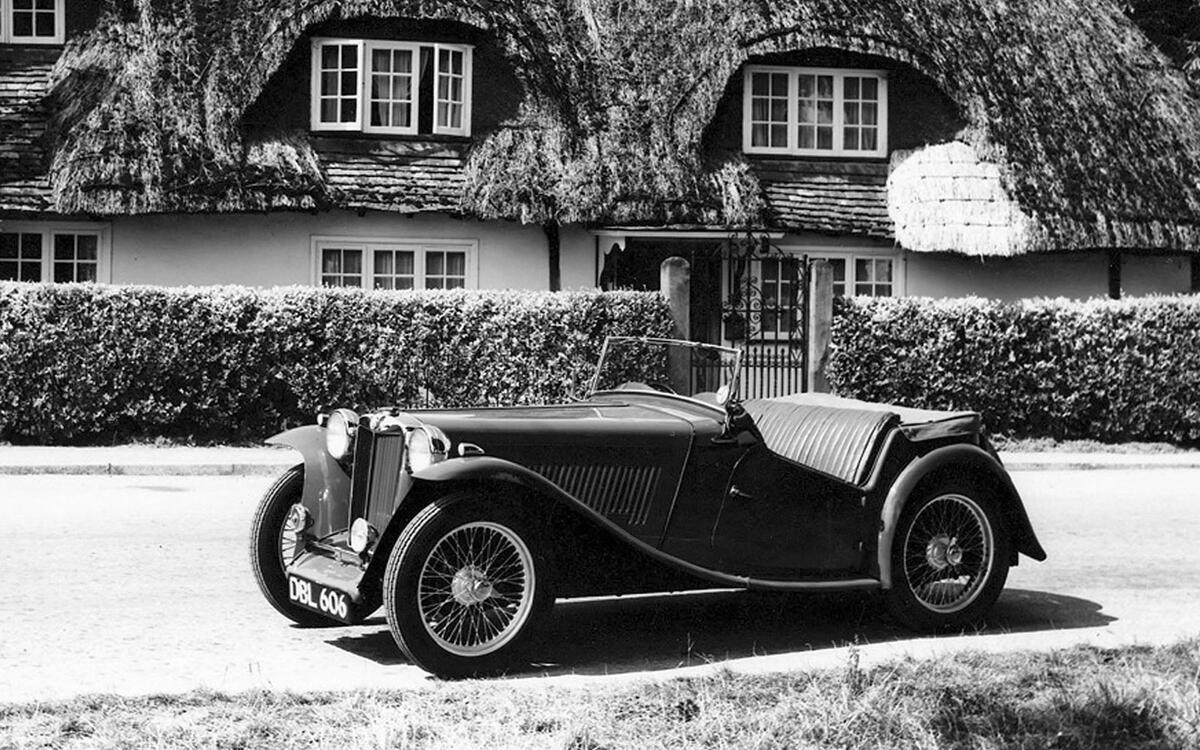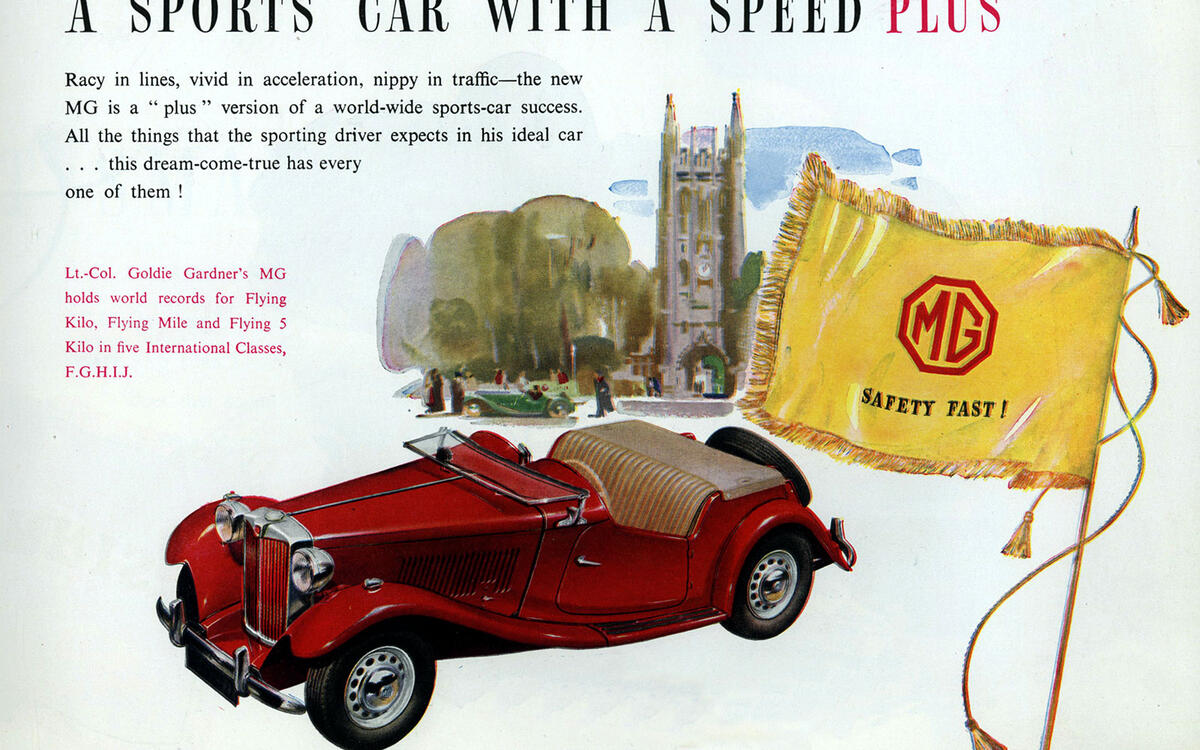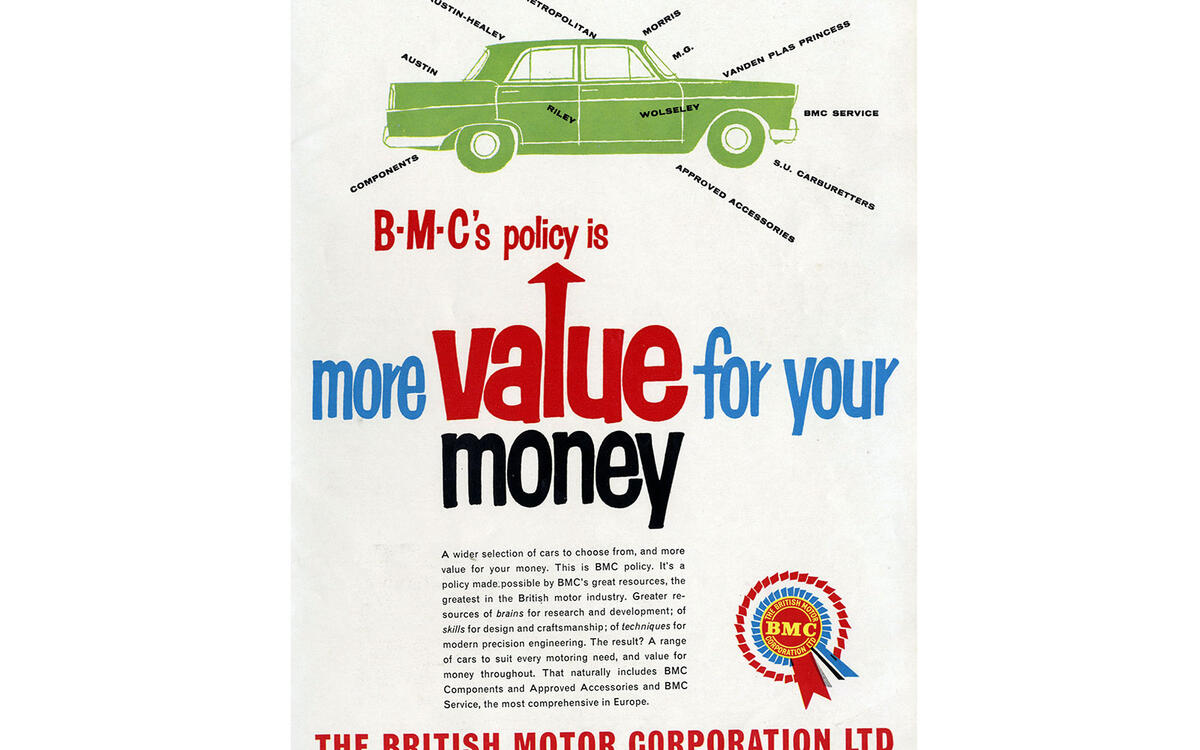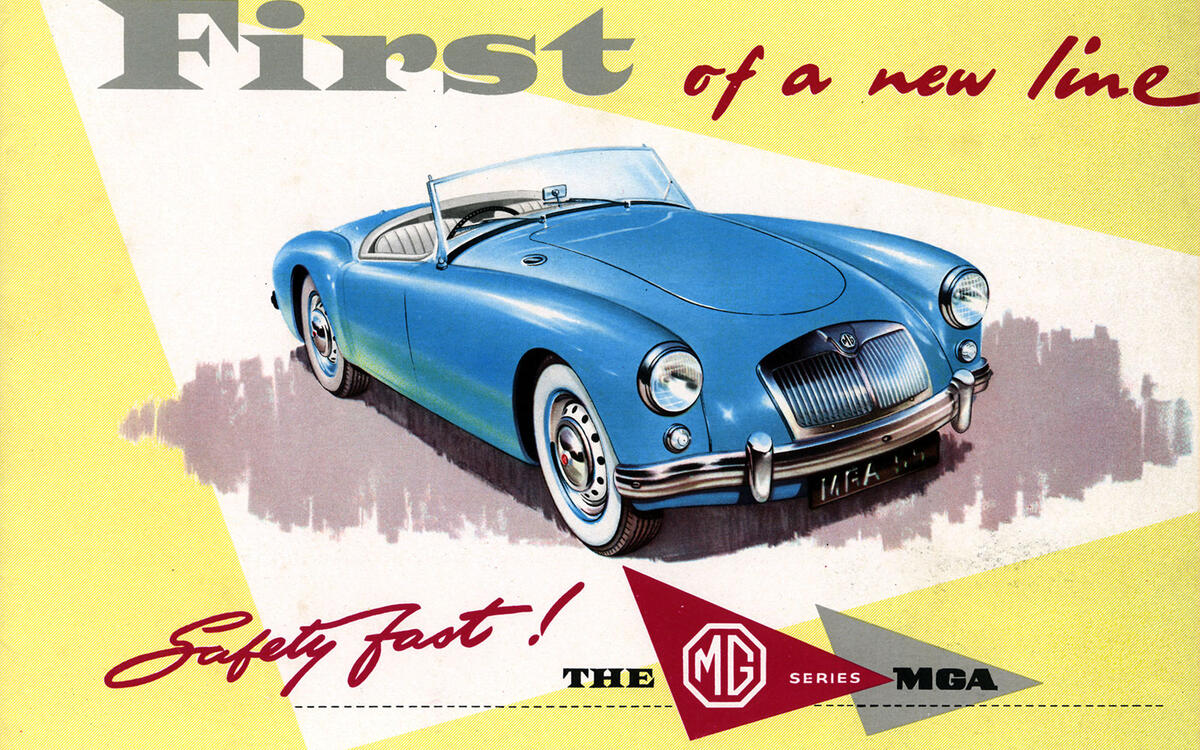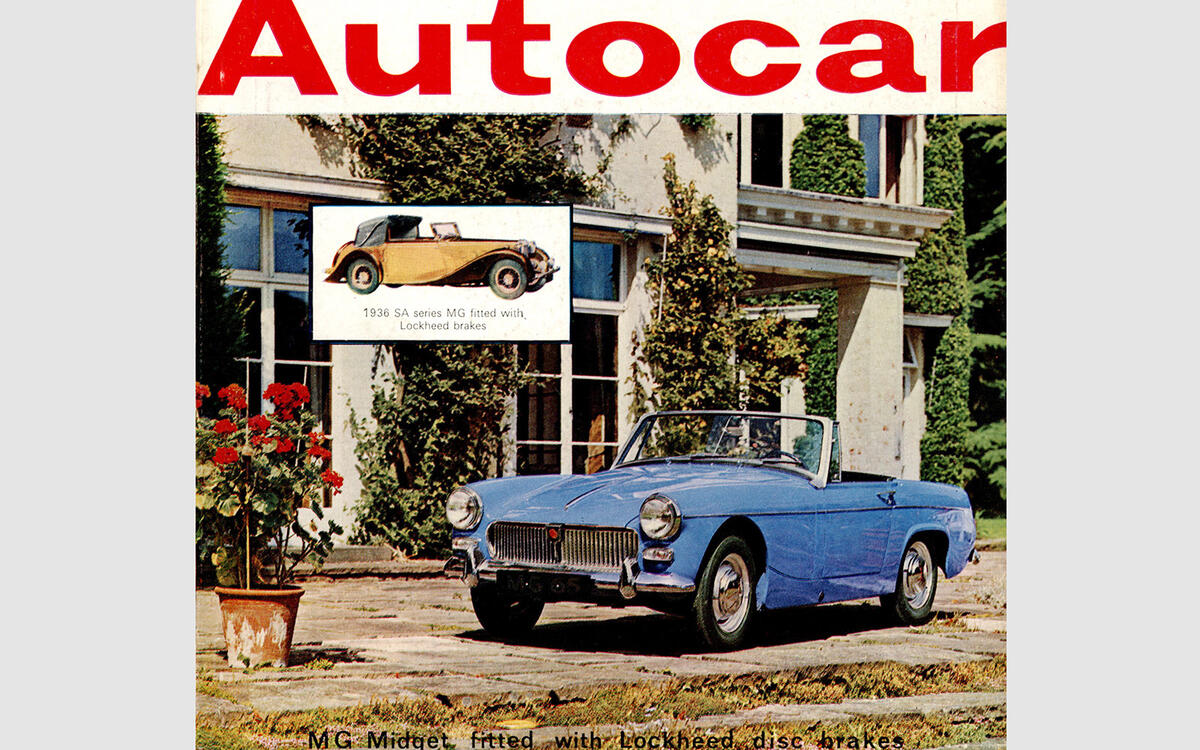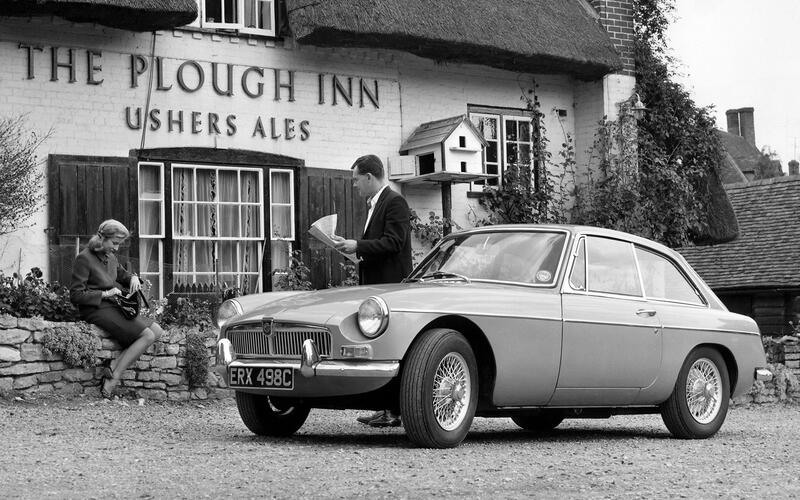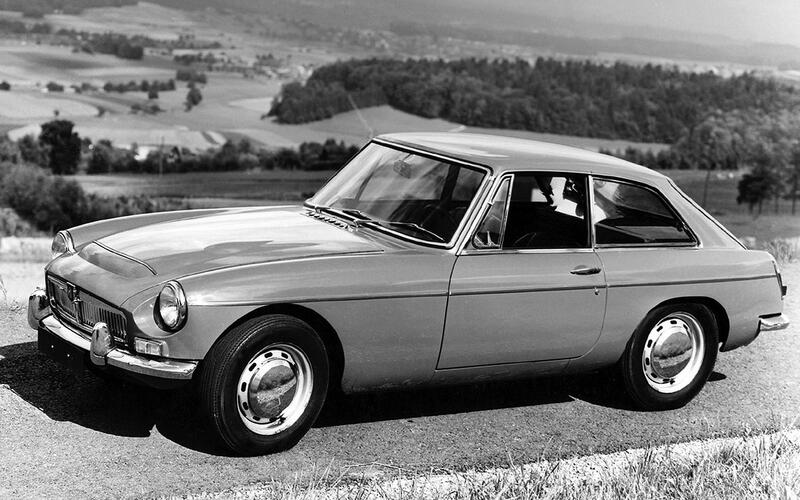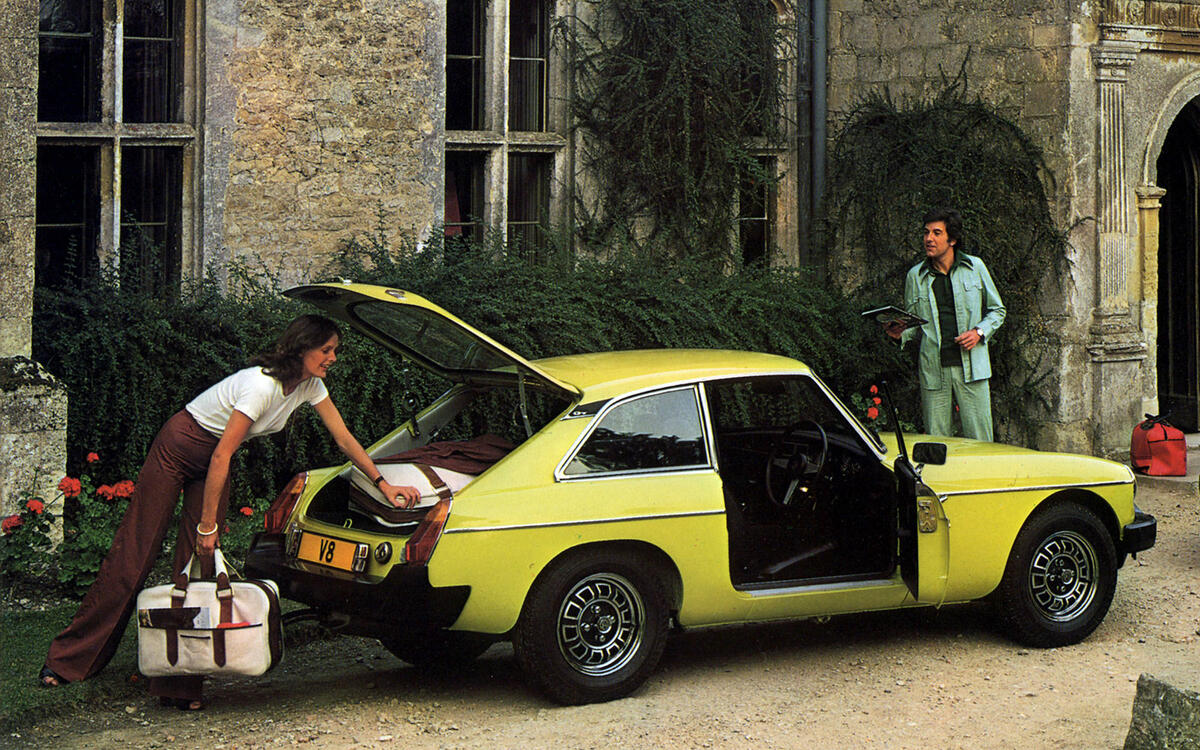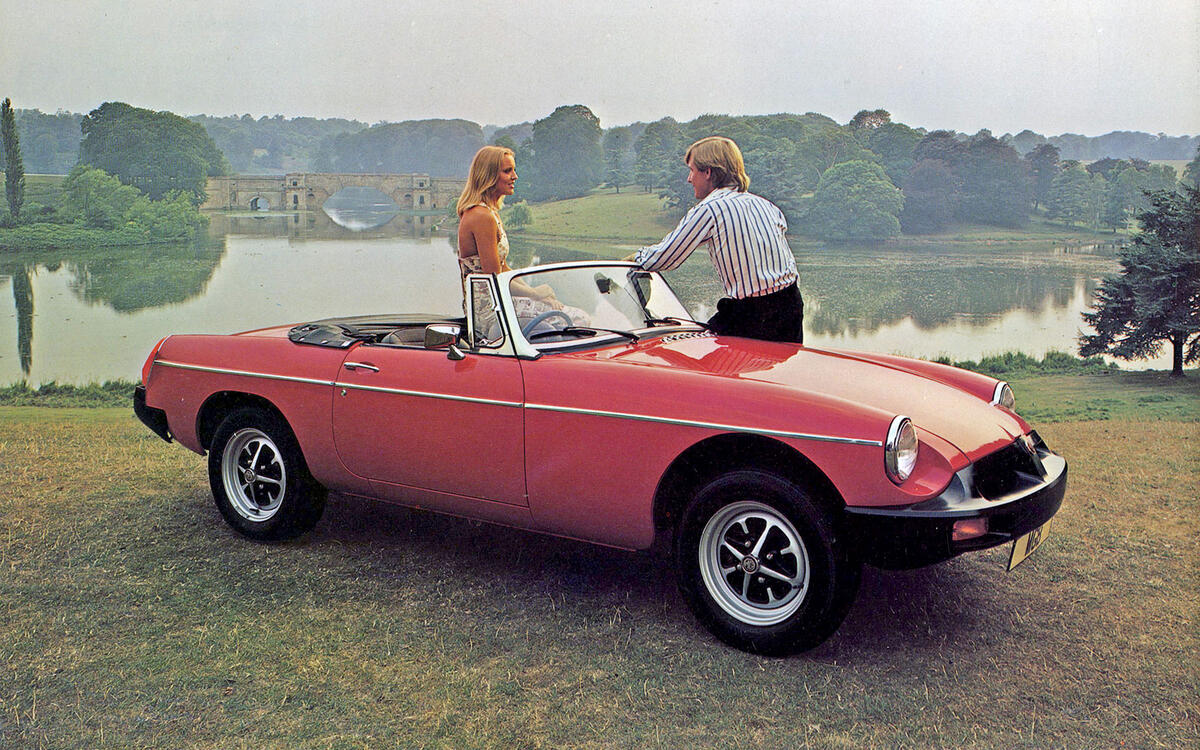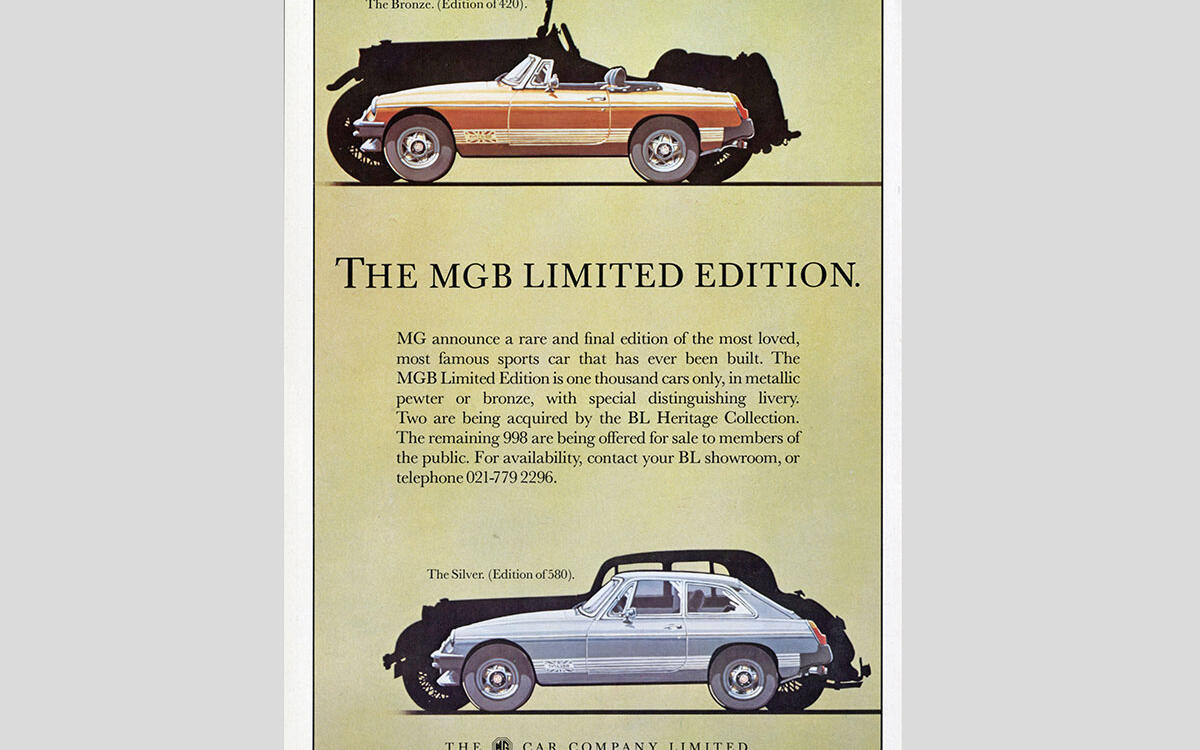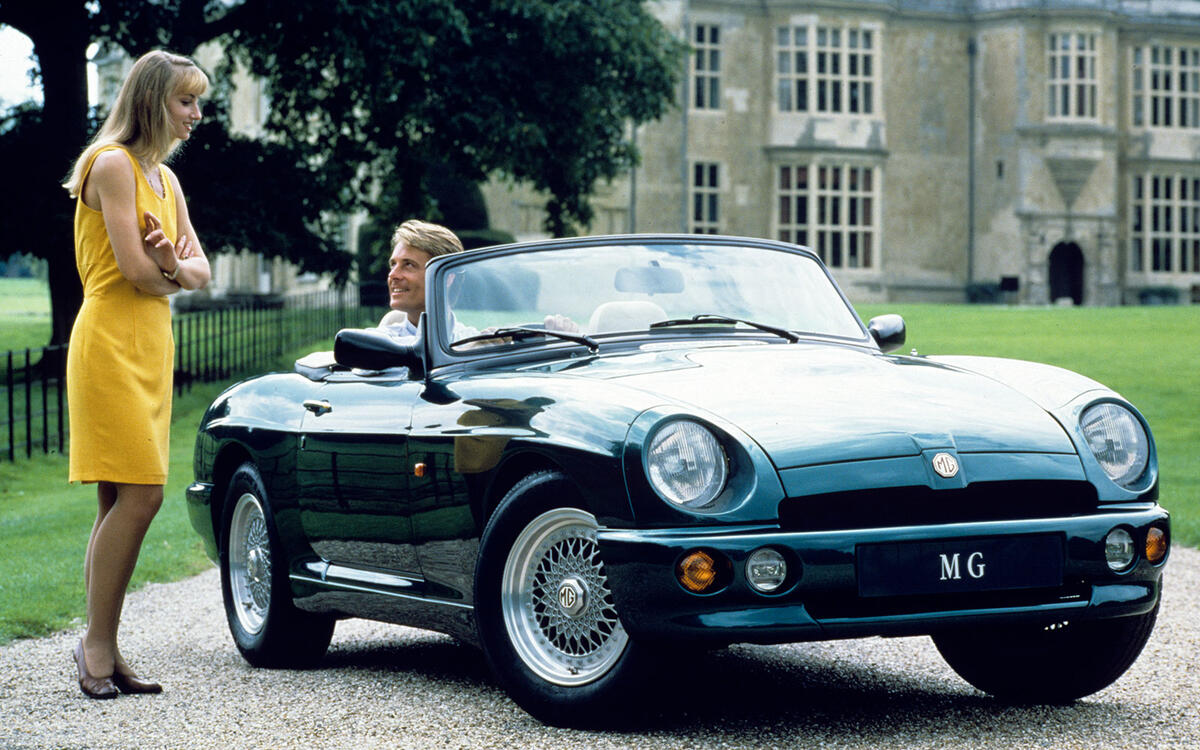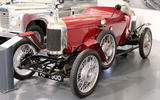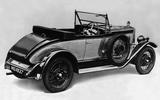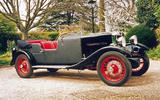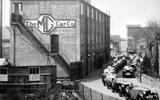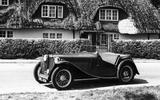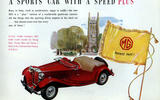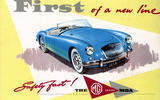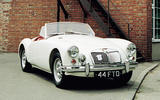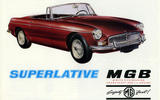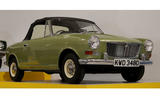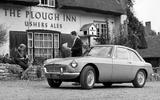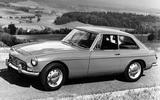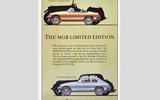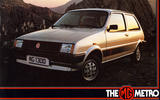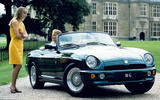 Slide of
Slide of
In 2019 MG celebrated its 95th birthday. Or did it?
MG is one of the most quintessentially British marques, but it's now owned by a Chinese company. MG has a rich history of producing affordable sportscars, many of which were huge sellers in the US in the ‘60s and ‘70s.
Join Autocar for the story of how the company surfed a wave of success, how it came unstuck, and how it intends to rise again:
 Slide of
Slide of
Starting out (1924)
It all started somewhere between late 1923 and early 1925; nobody is really sure when. William Morris (1877-1963) had set up Morris Motors in Oxford, England, in 1910 to produce affordable transport for the masses. By the early 1920s the company was flourishing, and in 1921 a dealer appointed a new sales manager, Cecil Kimber. The dealership was Morris Garages and Kimber (pictured here) was keen to do much more than just sell Morrises – he wanted to build his own cars.
 Slide of
Slide of
MG Old Number One (1925)
Often credited with being the first ever MG, Old Number One (officially a 14/40 Super Sports) was the first car to wear MG badges that was built specifically to Cecil Kimber's own design, to win sporting events. The start point was a Morris Cowley chassis, modified in spring 1924 but not bodied until some time early in 1925, by Carbodies of Coventry. Before this came numerous Morris Cowleys, modified to MG spec, so FC7900 isn't the first MG as such.
 Slide of
Slide of
A new factory (1927)
MG now claims it began in 1924, but as early as November 1923 there was an advert in an Oxford newspaper for a car that carried both Morris and the now-famous octagonal MG badges. It was for a Morris rebodied by Coventry-based Carbodies; the mundane sedan bodywork had been swapped for something sleeker and sportier.
Well made and relatively affordable, this first model put MG on the map and led to rapid expansion; by September 1925 it had already been forced to relocate to larger premises. Even this would quickly prove too small however, so in 1927 MG moved to its own factory, based in Cowley, Oxford (pictured).
 Slide of
Slide of
Old Speckled Hen (1927)
Another piece of MG history, Old Speckled Hen was a 14/40 Featherweight Fabric Sedan which started out as a Morris Cowley. MG boosted power to 40bhp thanks to some porting and polishing and a lighter bodyshell was designed. The car's name derives from its mottled silver-flecked paintwork that got the car the nickname of 'owd speckly un' which morphed into Old Speckly Hen.
 Slide of
Slide of
MG 18/80 (1928)
MG turned a corner in 1928, when it took its first stand at the London Motor Show. Sales really took off and one of the reasons for that was MG's new sporting sedan, the 18/80. This was the first car to feature MG's distinctive radiator grille and also its first six-cylinder vehicle. Power came from a 2468cc straight-six that put out 60bhp – enough to give a very healthy top speed of 80mph.
 Slide of
Slide of
Going it alone (1929)
Up to this point MG was operating on the coat tails of Morris, but by 1928 MG was doing so well that it was time to break out on its own, and all references to Morris were dropped with the founding of the MG Car Company. Having moved premises pretty much every other year, the final move for MG came in 1929 when it moved into a factory in Abingdon, south of Oxford.
It was this location with which MG would be inextricably linked right up until the B would go out of production, in 1980 – a point at which the company’s very existence was thrown into doubt.
 Slide of
Slide of
MG's first sports car (1929)
Although MG and Morris were separate companies in the 1920s and 1930s, whatever Morris produced had a direct impact on MG. When Morris launched its Minor in 1928 to compete with the Austin Seven, MG introduced a sporty version, the M-Type Midget, complete with Wolseley-designed overhead-cam engine.
It was the first car of its kind and it set a new trend in sports car design. It also laid the foundations for MG, which would quickly build itself a reputation for competition success, thanks to much factory-backed racing.
 Slide of
Slide of
MG TA (1936)
The MG T-Series created the affordable two-seater sportscar template, starting with the TA of 1936 with its 1292cc four-cylinder engine that produced just 51 HP. That was enough to give the lightweight sportster a very respectable 78mph top speed. The TA got a tweaked engine in 1939 to become the TB, but just 379 examples were built before the outbreak of war.
 Slide of
Slide of
MG TC (1945)
With the Second World War over, MG put the T-Series back into production, as the TC. This was little more than a widened TB, but it was a very significant car for MG as in 1946 it became the company's first model to be exported to the US where it quickly got a following - despite the fact that it came with right-hand drive only and was very basic – it didn't even come with a heater.
MG though needed to get back on the horse, the company having spent the war years producing tanks and aircraft parts. And there was a ready market – much of Europe’s car industry had been bombed into oblivion, but there was still a demand for new cars, civilian production practically everywhere - including the US - having ceased during the war. 10,000 TCs were built over the next two years, far more than any MG to date, around 2000 of which ended up in America.
 Slide of
Slide of
MG TD (1947)
The TD really offended MG purists with its disc wheels instead of wire items, full-width chrome bumpers and more upright looks thanks to a fresh chassis and bodyshell. There was redesigned front suspension too, and despite reservations on the part of some, the TD would go on to become the most popular of all the T-Series models, with almost 30,000 sold.
 Slide of
Slide of
Swallowed by BMC (1952)
In 1935 MG was swallowed up by Morris Motors, which was already a part of the Nuffield Organization. When the latter was in turn amalgamated with the Austin Motor Company in 1952, the British Motor Corporation (BMC) was created. It was this which would have a major impact on MG’s product line, as many models would be little more than rebadged versions of other models available within the BMC empire.
 Slide of
Slide of
MG TF (1953)
The final T-Series was the TF, with a more modern look than the TD thanks to the use of faired-in headlamps. Underneath it was still a TD, although by 1954 there was a new engine, now displacing 1500cc. 3400 of these bigger-engined TFs were built.
In 1954 Road & Track magazine voted the car ‘America’s best sports car buy’ – but also noted that on roads increasingly dominated by V8-powered Detroit machines, the 64 HP TF struggled to compete in performance terms, and US sales were dwindling. A new car was needed.
 Slide of
Slide of
MGA (1955)
Arguably the prettiest car ever to come from MG, the A also offered lively performance and excellent agility. The MGA carried over the TF's 1489cc B-series engine, drum brakes all round and a four-speed manual gearbox. At first there was a roadster only, but by 1956 there was a coupé too. In 1959 the MGA 1600 MkI brought a 1588cc engine and disc front brakes; the MkII of 1961 featured a 1622cc powerplant.
The MGA was a great success – 100,000 were sold over eight years, about half of them in America.
 Slide of
Slide of
MGA Twin-Cam (1958)
The MGA Twin-Cam featured a strengthened engine block with an aluminum twin-cam head. Offering 108bhp to give 115mph, the Twin-Cam was great to drive, but reliability problems did the car’s reputation no favors which is why the model was killed off after just two years, with barely 2000 examples sold. As with the MGA 1500 and 1600, there were coupé or roadster editions available.
 Slide of
Slide of
MG Midget (1961)
The Austin Healey ‘Frogeye’ Sprite introduced the concept of a truly affordable sports car. When that model was updated to become the more conventional Sprite, an MG version was introduced, called the Midget and it proved hugely successful. At first a 47 HP 948cc A-series engine was fitted, but within a year this had given way to a 56bhp 1098cc edition. Later would come a 66 HP 1275cc engine, plus a raft of other improvements.
 Slide of
Slide of
MGB roadster (1962)
The A had been such a success for MG that it had to be replaced with something that was a genuine step forward. Something that was easier to live with, easier to drive and cheaper to build. And that's just what happened, with the B, which debuted at the 1962 British Motor Show. Priced at £949, the B was powered by a 97 HP 1798cc B-series engine and the suspension was based on the MGA’s, to keep development costs down.
 Slide of
Slide of
ADO34 (1964)
Before the MG Midget was announced, MG was thinking about introducing a front-wheel drive two-seater convertible, on the back of the Mini's success. But when fellow BMC division Austin-Healey decided to updated its Frogeye Sprite into the more mainstream Sprite MkII, the decision was taken to stick with rear-wheel drive and the Midget was born. Pininfarina designed ADO34 but its efforts weren't wasted, as the Peugeot 204 cabriolet borrowed much of the design and mechanical layout.
 Slide of
Slide of
MGB GT (1965)
The MGB GT was a stylish hatch that was a true mini Grand Tourer. Although outwardly the MGB didn't change much, in October 1967 a MkII version arrived, with a fully synchronised gearbox, a change to negative earth electrics and an alternator instead of a dynamo. A month later an automatic gearbox became available – but auto-equipped Bs are now very rare and unloved.
 Slide of
Slide of
MGC (1967)
With the Austin Healey 3000 going out of production, BMC needed a decent six-cylinder replacement. The answer lay in creating a six-pot MGB which entailed redesigning the floorpan and redeveloping the engine, but the result was a car that was universally poorly received, thanks to its nose-heavy design. Offered in roadster and GT forms, production lasted just two years with 4542 examples made.
 Slide of
Slide of
MGB GT V8 (1973)
Mini racer Ken Costello built his first V8-powered MGB, using the ex-Buick Rover 3.5-liter V8. The car went down a storm so he asked British Leyland for a steady supply of engines – and that proved to be his undoing. BL realised there was an opportunity so it put the MGB V8 into production in tin-top GT form only – just as the oil crisis hit. Production limped on to 1976 but just 2591 examples were made – with Costello continuing production alongside, having found an alternative source of engine supply.
 Slide of
Slide of
MGB rubber-bumper (1974)
For many this is when things started to really go downhill for MG; the introduction of rubber bumpers and a raised ride height for its big-selling B. It was all to comply with new US federal safety regulations, but the changes damaged the B's handling as well as its looks, although these later cars are more comfortable as well as more refined.
 Slide of
Slide of
MG Midget 1500 (1974)
As with the MGB, the Midget also had to be adapted to comply with US safety laws, and it was these that led to the final incarnation of the Midget in 1974, the 1500. Gone was the A-Series engine, replaced by Triumph’s 1493cc unit. The gearbox was improved too, along with crash safety, but the latter was also the reason for the ugly (and heavy) rubber bumpers, along with the raised ride height.
It was this higher center of gravity that spoiled the handling of the Midget, but the car continued to sell on account of its badge, price and the fun on offer. Production lasted until 1979.
 Slide of
Slide of
The final MGB (1980)
In 1980 British Leyland made the decision to close MG down; the last MGB was built on 22 October of that year, with the final run of 1000 cars all being special edition LE models. Buyers could choose between bronze paint with gold stripes and silver paint with gray stripes. Each LE came with a black plastic chin spoiler with roadsters getting orange and brown striped trim while the GT was fitted with gray upholstery.
American sales had ticked along in the 1970s at around 30,000 annually, but dipped to 15,000 in 1980. The American love affair with MGs was ending, and this along with chaos within its parent organisation signalled doom for the company. 500,000 MGBs were produced, half of which were sold in America.
 Slide of
Slide of
MG Metro (1982)
When MG's Abingdon factory closed in 1980, many assumed that the marque had breathed its last. But there was too much equity in the MG brand for it to die and in 1982 the brand was revived, although there was no new car. Instead we got an MG Metro with alloy wheels, a rear spoiler, decals galore and an extra 12bhp was squeezed from the 1275cc A-Series engine. That was enough to take the neat-looking shopping trolley all the way to 100mph.
A succession of MG versions of Austin Rover cars were produced over the next 14 years, though none were ever sold in America.
 Slide of
Slide of
RV8 (1992)
As MG approaches its 100th birthday, we look at the glory days of the company, and how it fell
Advertisement



